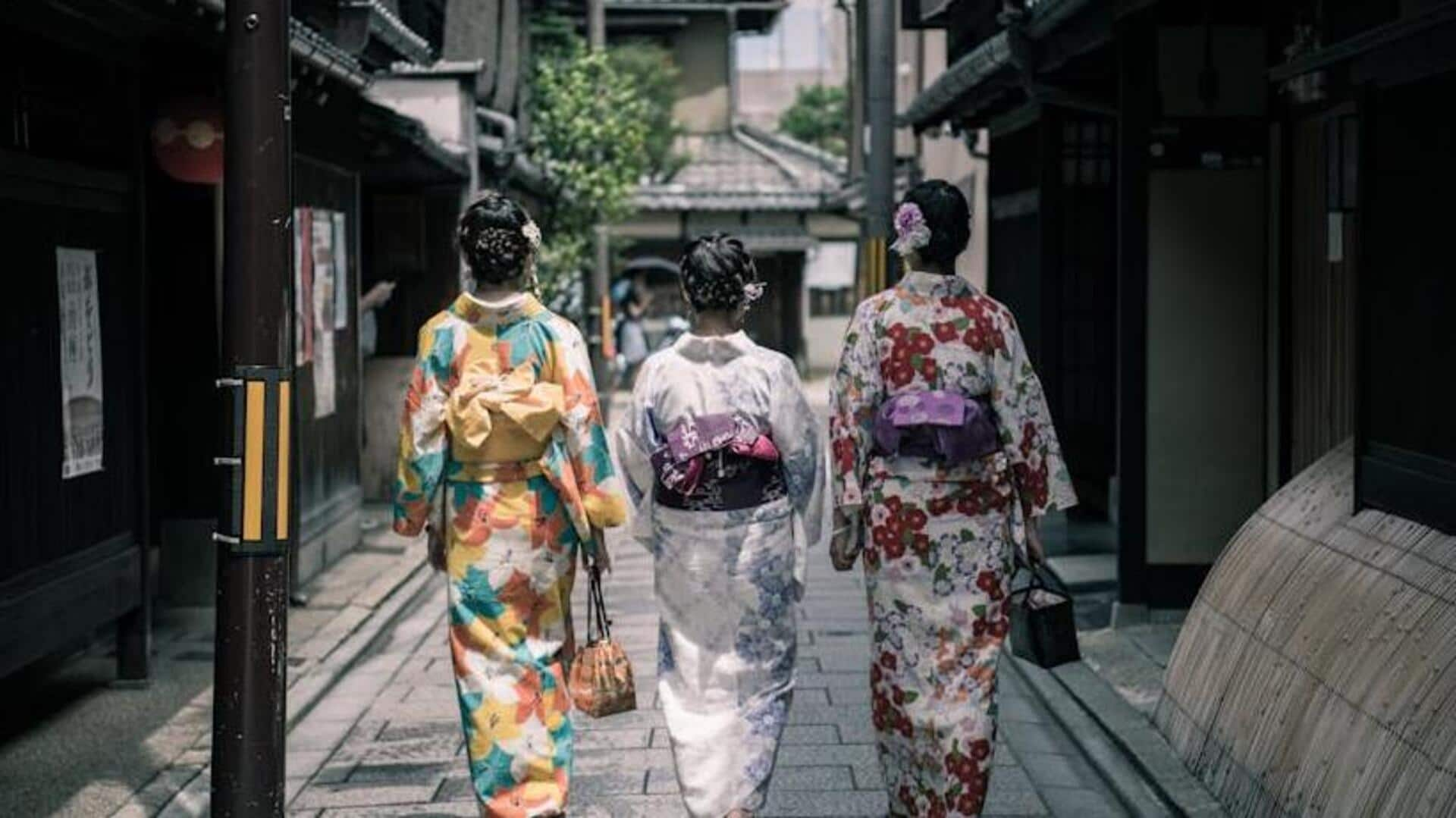
5 fascinating facts about Japanese kimono craftsmanship
What's the story
The traditional Japanese kimono is an epitome of cultural heritage and artistry. Its craftsmanship involves the use of intricate techniques, passed on through generations, reflecting Japan's rich history and attention to detail. Each kimono tells a story through its fabric, design, and colors. Here are five enchanting aspects of kimono craftsmanship that highlight the skill and dedication involved in creating these beautiful garments.
Weaving techniques
The art of weaving
Weaving is at the heart of kimono craftsmanship, requiring painstaking techniques to produce one-of-a-kind patterns and textures. Using traditional looms, craftsmen weave silk threads into elaborate designs, often drawing inspiration from nature for the motifs. The process demands precision and patience, as even a minor error can impact the final product. This commitment makes sure that each kimono is not just visually breathtaking, but also long-lasting.
Dyeing process
Dyeing with natural colors
Natural dyeing is a key process of kimono creation, where plant-based dyes are used to achieve various stunning colors. Craftsmen meticulously choose plants for their pigments, which are extracted through boiling or fermentation methods. The fabric is dipped into the dye multiple times until the desired hue is achieved. This technique not only yields rich colors but also makes them vibrant over time without fading.
Embroidery techniques
Intricate embroidery designs
Embroidery enhances the depth and texture of kimonos with intricate stitching techniques. Artisans employ silk threads to craft elaborate designs on the fabric's surface, often illustrating scenes from nature or traditional symbols such as cranes or cherry blossoms. Each stitch demands precision and skill, further beautifying the garment while reflecting the artisan's expertise.
Tailoring skills
Tailoring for perfect fit
Besides preserving the kimono's graceful silhouette, tailoring ensures every piece sits just right on its owner. Before cutting pieces out of woven fabric according to the pattern pre-designed for a body type, skilled tailors measure every detail perfectly. The patterns are also made for events such as weddings or tea ceremonies, where formal wear is needed more than the everyday casual wear options available globally today.